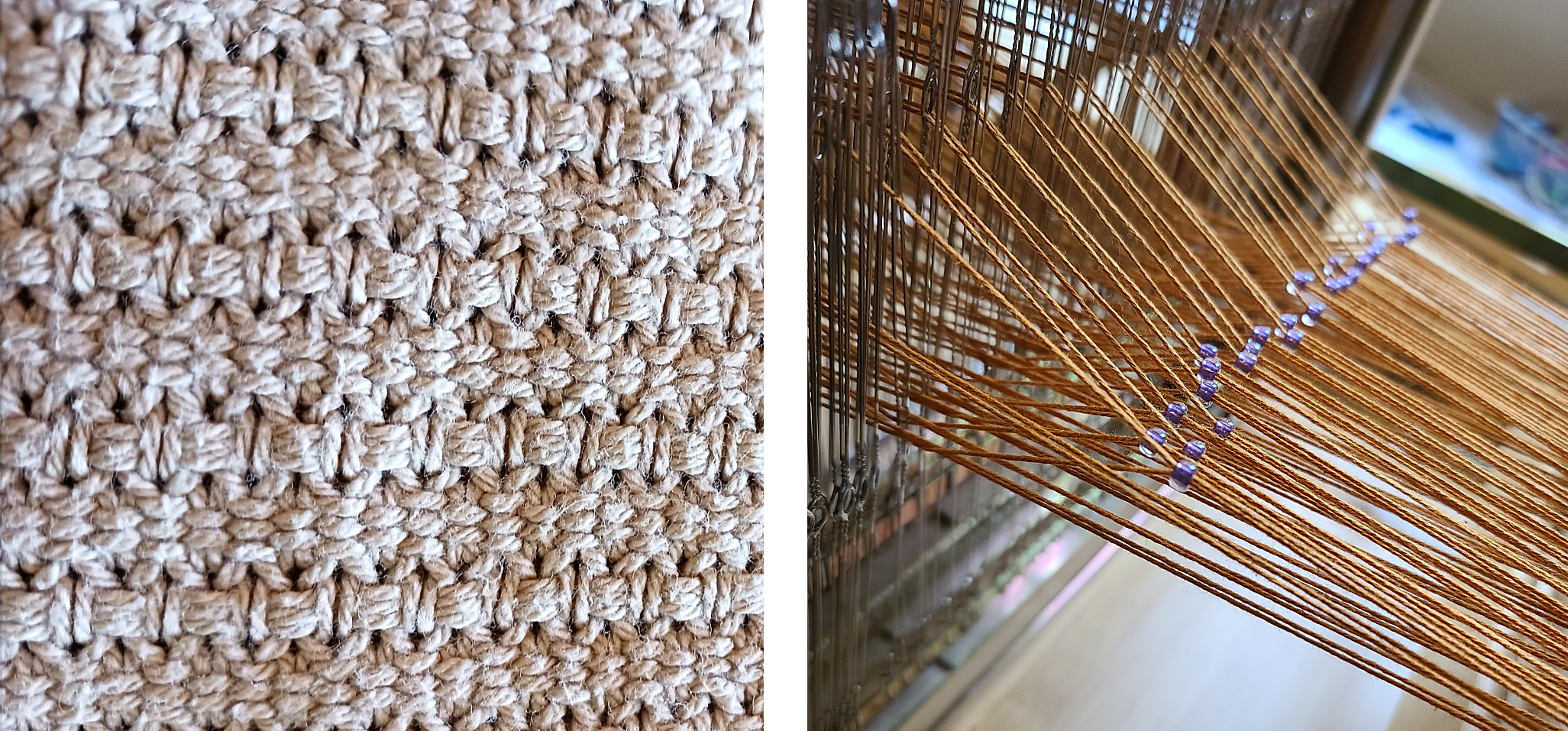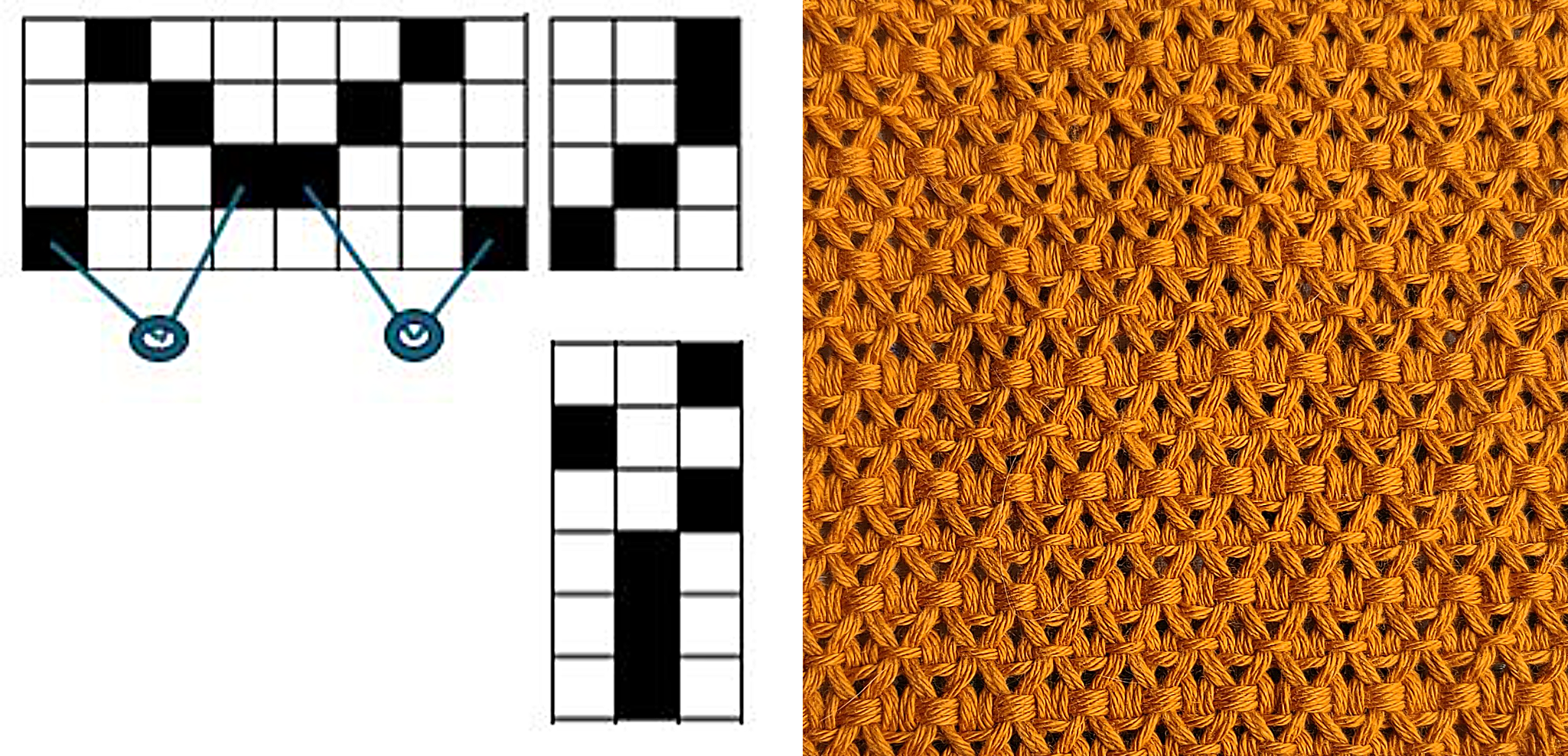Nov/Dec 2025: Smocked Bead Leno
Woven by Carol Buchmiller
Sometimes I choose a structure to weave, and sometimes it chooses me in a very roundabout way. Bead leno is a case of the latter.
Last Spring a friend sent me a picture of a blanket she saw while traveling. “Is this woven? How was it done?” she asked. I promised to look into it.
Then the April 2025 Guild program by Patrice George got me thinking about leno. Coincidentally, the Spring 2025 issue of Handwoven magazine had an article by Annette Swan Schiff on bead leno. In reading through the article, I noticed the drawdown for smocked leno and thought hey… that kind of looks like my friend’s blanket. Sure enough, in her picture I could see the warp ends twisting back and forth (see Figure: natural cotton blanket closeup).
Smocked leno is threaded 1-4-3-2 2-3-4-1, with the ends on shafts 1 and 2 threaded through a bead, under the ends on shafts 3 and 4, in front of the heddles and behind the reed. As you treadle, the pair of threads on shafts 1 and 2 are pulled to one side or the other of the threads on shafts 3 and 4 and secured with a weft pick (see Figure: threaded leno).
Unlike the blanket, my sample has only three picks of half-basketweave instead of five between sets of treadle 2, since I couldn’t beat hard enough to fit in 5 picks and the pairs of ends instead of a single thread made for a stiffer fabric overall. The repeated picks of treadle 2 required floating selvedges. (see Figures: smocked leno drawdown, smocked leno sample).
This was a fun if sometimes frustrating project. It was interesting to find that a lace weave doesn’t necessarily have to be lacy. I expect to do more with leno in the future.
——————————
Structure: Smocked bead leno
Pattern source: “Weaving Leno? Let Beads Do the Work!”, by Annette Swan Schiff, Spring 2025 issue of Handwoven Magazine
Loom: LeClerc Voyageur 8-shaft table loom, 4 shafts used
Yarn: Brassard 8/4 unmercerized cotton, pumpkin
Sett: 20 epi, sleyed 4 ends every third dent in a 15-dent reed
Finishing: Hand wash, tumble dry to damp, press dry with hot iron
Tips: The twist picks make for a very shallow shed, so bead leno is best done with a low-profile shuttle on a loom that has a naturally deep shed.
Jump rings or knitting stitch markers don’t work well as the “bead” because they are flat and tend to pop to the front of the reed. Also, if they are too big, they tend to catch the unbeaded ends and then the twist doesn’t happen. I got good results with 4mm Japanese seed beads, which have a large hole that is finished smoothly inside.
Bio:
Carol Buchmiller is a longtime knitter who started weaving in 2016 in an attempt to use up her yarn stash. She enjoys experimenting with structures, color, and fibers, and trying to replicate old family textiles.



